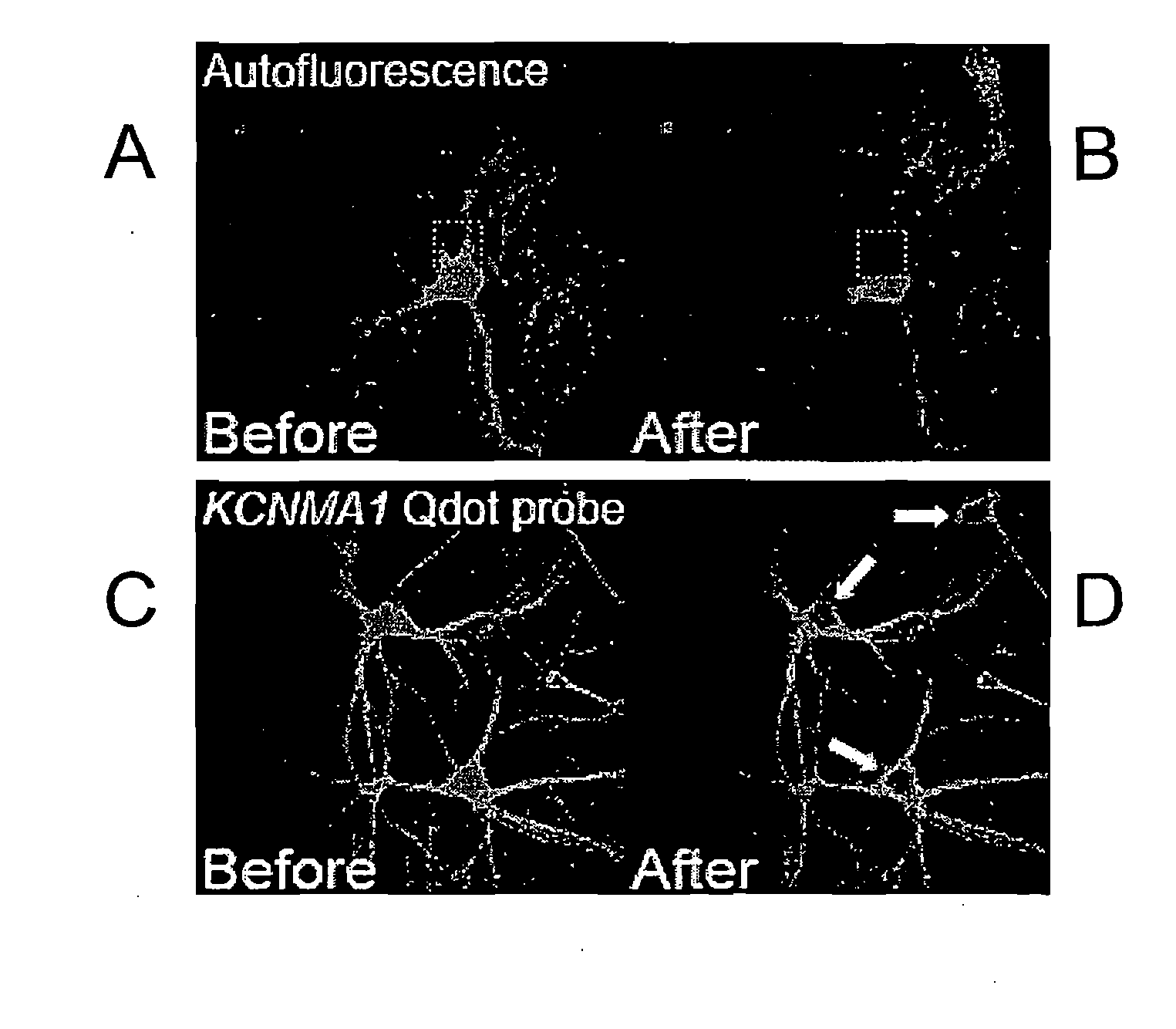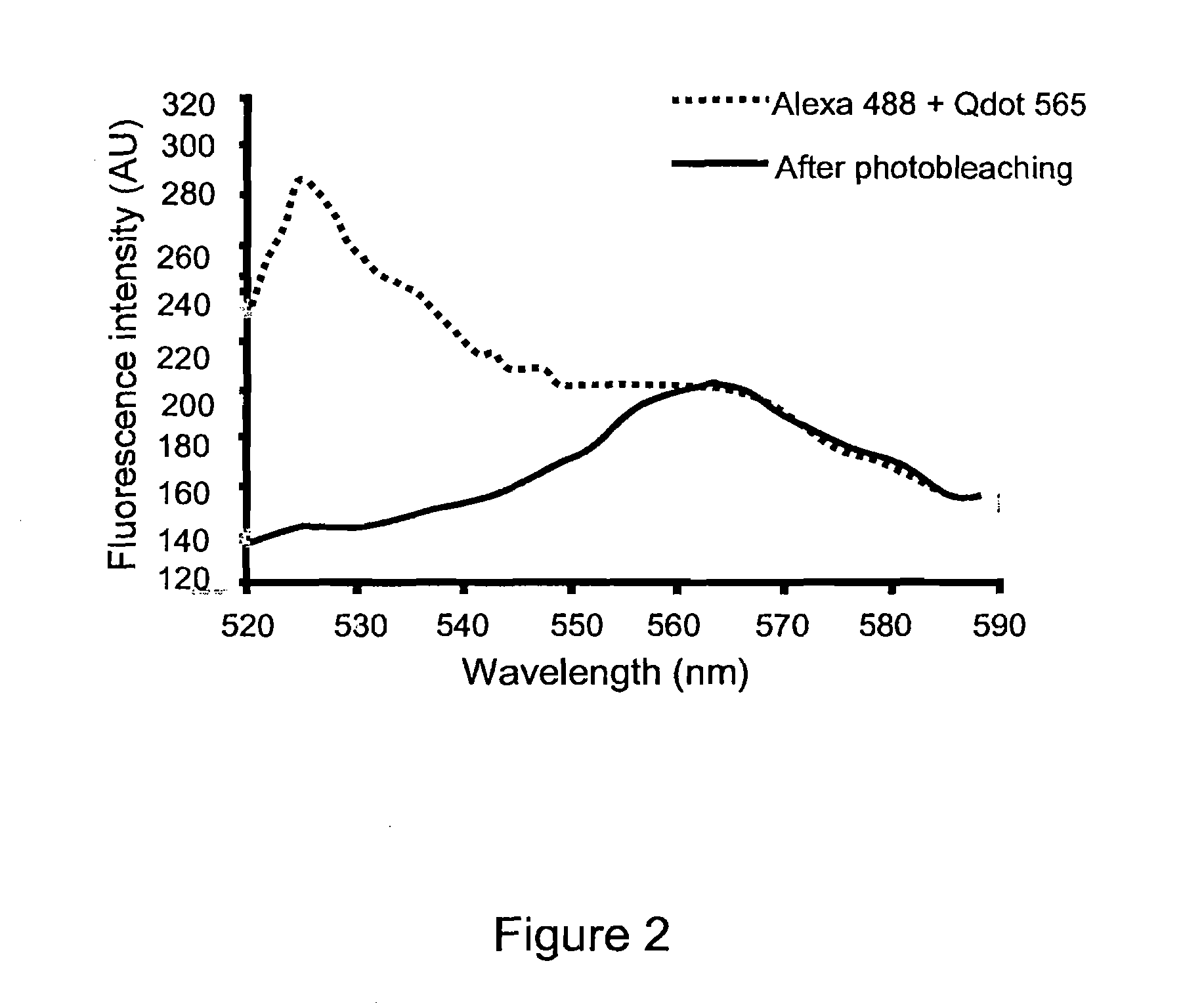Low Level Fluorescence Detection at the Light Microscopic Level
a fluorescence microscopy and light microscopic technology, applied in the field of light microscopic fluorescence detection, can solve the problems of lack of sensitivity of color development, lack of ability to finely discriminate subcellular localization, and limitations of each cellular target detection, so as to reduce unwanted fluorescence
- Summary
- Abstract
- Description
- Claims
- Application Information
AI Technical Summary
Benefits of technology
Problems solved by technology
Method used
Image
Examples
experimental examples
[0161]The invention is further described in detail by reference to the following experimental examples. These examples are provided for purposes of illustration only, and are not intended to be limiting unless otherwise specified. Thus, the invention should in no way be construed as being limited to the following examples, but rather, should be construed to encompass any and all variations which become evident as a result of the teaching provided herein.
[0162]The materials and methods employed in the experiments disclosed herein are now described.
Hippocampal Cultures
[0163]Primary cultures of hippocampal neurons from E19 rat embryos were plated on glass coverslips at 100,000 per ml in Neuralbasal media with B27 supplements (Sigma). Hippocampal neurons were dissociated in L-15 media with collagenase (20 mg / ml, Sigma) and dispase (96 mg / ml, Sigma). Enzymatic digestion was carried out at 37° C. for ˜45 min and cells triturated periodically with a fire polished pipette to facilitate diss...
example 1
Signal Intensity of Alexa 488 and Qdot-565 Before and After Photobleaching
[0170]Primary rat hippocampal neurons were prepared for immunohistochemistry. Anti-digoxigenin Fab garments conjugated to Qdot 565 (Invitrogen) were used at 1:250. AlexaFluor 488 phalloidin (Molecular Probes) was used at 1:40. Images were taken with an Olympus Fluoview 1000 confocal scan head. For each cell, five randomly placed line scans were taken from three separate regions of interest and analyzed with the Metamorph image processing software. In FIG. 1, the emission spectral signature over the range from 520 to 580 nm wavelength was obtained before and after full spectral photobleaching of a sample for two seconds. In a sample stained only for Alexa 488, the photobleaching procedure abolishes Alexa 488 signal (FIG. 1B). In a second sample stained with Qdot-565, the identical full-spectrum photobleaching protocol was used, however the Qdot-565 signal was not affected (FIG. 1C and FIG. 1D).
example 2
Selective Elimination of Unwanted Fluorescent Signals in a Single Sample Using Photobleaching
[0171]In order to confirm the specificity of the photobleaching technique and establish the utility of the present invention for use with multiple probes in a single sample, Qdot-565 and Alexa 488 were applied to a single sample at concentration of 1:250 and 1:40 respectively. The sample was photobleached using a full spectral scan for two seconds. The sample was then spectrally scanned and fluorescent intensity measured before and after photobleaching. Before photobleaching. The solid line shows the emission spectrum resulting from 458 nm excitation. The dotted line shows the remaining emission spectrum following photobleaching. These date clearly demonstrate the elimination of unwanted fluorescence signal of specific wavelength with sparing of the Qdot signal.
PUM
| Property | Measurement | Unit |
|---|---|---|
| characteristic wavelength | aaaaa | aaaaa |
| characteristic wavelength | aaaaa | aaaaa |
| characteristic wavelength | aaaaa | aaaaa |
Abstract
Description
Claims
Application Information
 Login to View More
Login to View More - R&D
- Intellectual Property
- Life Sciences
- Materials
- Tech Scout
- Unparalleled Data Quality
- Higher Quality Content
- 60% Fewer Hallucinations
Browse by: Latest US Patents, China's latest patents, Technical Efficacy Thesaurus, Application Domain, Technology Topic, Popular Technical Reports.
© 2025 PatSnap. All rights reserved.Legal|Privacy policy|Modern Slavery Act Transparency Statement|Sitemap|About US| Contact US: help@patsnap.com



